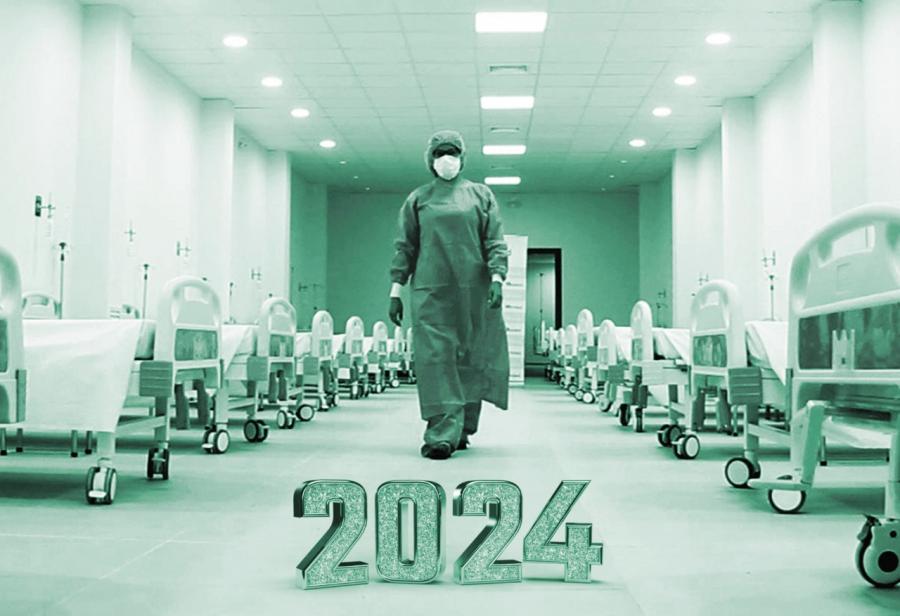The government's strategic challenge is to “build a unified health system that guarantees the full exercise of the right to health and social security” for all Peruvians. The need to build a unified health system has been highlighted during the pandemic and this was reflected, as a consensus, in the National Compact Forum. The importance of this consensus lies in the fact that the National Center for Strategic Planning (SEPLAN), which is the administrative body of the national strategic planning system, facilitates the monitoring of state policies adopted in the national agreement. To formulate the 2050 Strategic National Development Plan, the consensus reached at the National Agreement Forum was used as a basis. On the other hand, the legislative agenda of the Congress of the Republic is also based on the consensus of the National Agreement Forum. Therefore, these agreements are successively reflected in the three state authorities and in each sector, reaching the local level.
A unified health system does not mean nationalization or privatization, but rather the coordination and expression of all public, private or mixed entities, who participate in health and social security affairs, to provide a unified, coherent and integrated response to the needs of the population. The Ministry of Health (Mensa) is the administrative body, on the one hand, of its own sector and has an Intergovernmental Committee on Health (CIGS), to ensure the unitary and binding nature of the three levels of government in the field of health. On the other hand, he is also the head of the National Health System, the multisectoral and social entity in health matters, with broad representation. The National Health System is led by the National Health Council (CNS) and chaired by the Minister of Health. There are also regional and local councils (districts and districts).
Under the National Agreement, the National Health Council will have deliberative and advisory functions, although its proposals may become binding in emergency situations. Furthermore, according to the Law on the Organization and Functions of the Department of Health (DL 1161 as amended by Law 30895 and DL 1504), the administrative authority of the Department of Health includes the power to regulate, supervise, supervise, and impose sanctions when appropriate. , in areas that include health matters. Likewise, it organizes and supervises the provision of health services, at the national level, in the following institutions: EsSalud, Health of the National Police of Peru, Health of the Armed Forces, Health Institutions of the National Government and Regional and Local Governments; And other public, private and public institutions.
However, in the organizational progress in building the unified health system, there are still shortcomings and absences, such as, for example, organizational adaptation to its coherent and unitary operation through the establishment of a common system, in a consensual and explicit manner. National and sectoral policies, policies and national health standards, as well as in regulating the sanctioning authority of the Ministry of Mensa for its work, i.e. in regulating the classification of crimes and their corresponding penalties.
The next aspect, essential for the unified health system, is the structure of the new health management model, based on integrated health networks. The Law on the Formation of Integrated Health Networks (Law No. 30885) integrates all health organizations through coordination, expression and integration, without any distinction, neither due to their complexity nor due to their public, private or mixed nature. That is, the networks consist of health centers and centers known as the first level of health care, hospitals and institutes (the second and third levels), in addition to health institutions affiliated with other public sectors and those affiliated with the private sector. That is, it is a deep process of organizational transformation, consistent with building a unified health system.
Despite the clarity of Law 30885, there is still “Former scholars or officialsWhich aims to suggest that integrated health networks are “a delivery model for the first level of care or health care” that “seeks to: improve population health, improve user experience, improve use of public resources and increase health worker satisfaction.” They even conclude that “The regulatory framework (Law 30885) does not eliminate fragmentation (health). On the contrary, it exacerbates it and perpetuates the state’s inefficiency in managing public resources, and it limits the governance around it.” Territory.
This is the reason why, so far, no progress has been made in forming integrated health networks, or because the guidelines for preparing the operations manual for institutes and hospitals have increased the fragmentation of the health sector, as they have not been included, structurally and functionally, in integrated health networks. As a result, the Ministry of Health was forced, on the one hand, to resume the formation of integrated health networks, with sub-legal regulatory adaptation, and, on the other hand, to abolish the above-mentioned guidelines and work on a new proposal for health guidelines and operations manual within the framework of integrated health networks.
Another aspect that is sometimes misunderstood is that integrated health networks entail a new model of health care organization because they abandon the focus on health risks and adopt the approach on social determinants of health. (Article 5 of Law 30885). Therefore, it is not a new experience for the “health services network”, but rather a starting point for a new relationship between the state and society. Therefore, it is necessary to combine actions at the local level of the Intergovernmental Health Committee (CIGS) and the National Health Council (CNS).
The new health management model, through integrated health networks, involves broad social participation, due to its focus on social determinants and public health. Likewise, it relaunches the relationship between state and state and state and society. The latter includes the relationship with private companies, civil society, associations, community organizations, unions, and others.
The challenges facing the government for 2024 also include bridging the gap between…
The number of insured people and the number of those who “actually” have access to health services, adequate supplies of medicines and reduction of out-of-pocket expenses, digitalization and computer interoperability, as well as quantitative and qualitative strengthening of human resources in health. Huge challenges!

“Beeraholic. Friend of animals everywhere. Evil web scholar. Zombie maven.”







More Stories
They are able to dive into the water without having to breathe
How NASA regained contact with Voyager 1, the spacecraft that has traveled further than any other
Scientists revive old cell phone batteries using a chemical method